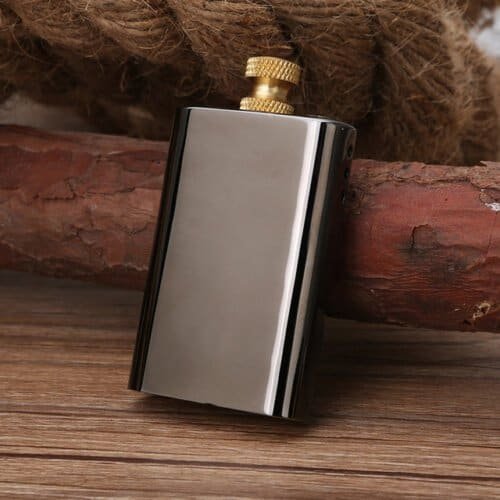Lighters are versatile, portable devices designed to produce a flame with ease and are an essential tool in various everyday and specialized applications. Typically used for igniting cigarettes, candles, and campfires, lighters have transcended their basic function to become multifunctional tools integrated into emergency kits and used in culinary arts for tasks like caramelizing sugar on desserts. The history of lighters dates back to the early 19th century, predating the common match and offering a more reliable and wind-resistant solution to fire-starting needs. Available in a myriad of styles—from disposable plastic models to elegant, refillable metal cases—lighters have also become a popular collectible item, admired for their craftsmanship and aesthetic variety. Whether used for practical purposes or as a collector’s item, lighters continue to be a pivotal invention, providing quick and reliable access to fire with a simple flick or press.

Benefits Of Owning A Lighter
Owning a lighter comes with a multitude of benefits that extend beyond merely lighting a cigarette. These compact devices are engineered for reliability and can significantly enhance convenience in both everyday life and emergency situations. Here are some key advantages of keeping a lighter handy:
Immediate Access to Fire
Lighters provide instant fire with minimal effort, which is essential in many scenarios from lighting stoves during a power outage to quickly starting a campfire while outdoors. Unlike matches, which may require multiple attempts and are vulnerable to moisture, a lighter is typically more dependable and faster.
Durability and Reliability
Modern lighters are designed to be durable and functional under a variety of environmental conditions. High-quality models are often waterproof, windproof, and capable of operating effectively in extreme temperatures, making them invaluable tools for outdoor adventurers and survival enthusiasts.
Cost-Effectiveness
Refillable lighters are particularly cost-effective over the long term. Instead of purchasing disposable lighters repeatedly, a refillable lighter can be used for years with proper maintenance, merely requiring occasional refills of lighter fluid or replacement of flints.
Environmental Impact
By opting for a refillable lighter, users can minimize their environmental footprint. These lighters reduce the waste associated with disposable plastic models, contributing to less landfill waste and decreased environmental pollution.
Safety Features
Many modern lighters come equipped with safety features that prevent accidental ignition, making them safer to store and use around the home compared to matches. Child-resistant features ensure that lighters are not easily used by children, enhancing household safety.
Multifunctionality
Beyond lighting fires, lighters are often incorporated into multi-tools and emergency kits. Some specialized models include features like LED lights, cutting blades, or even USB charging ports, making them a multifunctional device useful in various emergencies and daily tasks.
Portability
Lighters are designed to be portable, fitting easily into pockets, backpacks, and emergency kits. This portability ensures that you can have access to fire wherever you go, a crucial factor in both urban and wilderness settings.
Aesthetic and Collectible Value
The vast array of designs, from sleek and modern to ornate and vintage, makes lighters appealing to collectors and fashion-conscious users alike. They are often customized and can serve as a personal accessory or a thoughtful gift.
By integrating a lighter into your daily gear, you gain a reliable tool that serves numerous practical purposes while also being economical and environmentally friendlier than many alternatives. Whether for daily convenience, emergency preparedness, or aesthetic pleasure, the benefits of owning a lighter are significant and varied.
How To Properly Use An Electric Lighter
Electric lighters, also known as plasma or arc lighters, offer a modern twist on traditional methods of creating fire. These lighters use electricity to generate a small but intense arc of heat that ignites flammable materials without an actual flame. Here’s a comprehensive guide on how to properly use an electric lighter, ensuring you get the most out of its advanced technology while maintaining safety:
Charging the Lighter
Before using an electric lighter for the first time, ensure it is fully charged. Most electric lighters come with a USB charging cable compatible with standard USB ports. A full charge typically takes around one to two hours. Indicator lights on the lighter will usually show when it is fully charged.
Turning the Lighter On
Electric lighters typically feature a button or switch to activate the heating element. Press or slide the button according to the manufacturer’s instructions to create an electric arc. Hold the button down to keep the arc active.
Lighting an Object
Carefully bring the tip of the lighter, where the electric arc forms, close to the object you wish to light. The intense heat from the arc will ignite the material. Unlike traditional lighters, electric lighters can light objects from any angle, which is particularly useful for lighting candles in deep jars or awkwardly positioned wicks.
Safety Precautions
- Never touch the electric arc, as it is extremely hot and can cause burns. Ensure your fingers are always behind the lighter’s protective features when operating.
- Do not use the lighter continuously for more than 10 seconds at a time, as this can overheat the lighter. Allow it to cool down before attempting to use it again.
- Keep the lighter away from water and other liquids to avoid damage to the electrical components.
Maintenance
- Keep the tip of the lighter clean and free from debris, which can accumulate and affect its performance. Wipe the lighter with a clean, dry cloth after use.
- Store the lighter in a dry place when not in use to prolong its lifespan and maintain its functionality.
Disposing of the Lighter
Unlike disposable lighters, electric lighters contain a lithium battery and other electronic components that must be disposed of properly. Refer to local regulations for disposing of electronics safely to minimize environmental impact.
By following these guidelines, you can effectively and safely use an electric lighter in various settings, from lighting candles and incense to starting a campfire or igniting a barbecue. Electric lighters are a reliable, environmentally friendly alternative to traditional lighters, offering convenience and safety with a modern approach to generating heat.
Maintaining The Device For Future Use
Proper maintenance of a lighter, whether it’s an electric model or a traditional fluid-filled one, is crucial for ensuring its longevity and reliability. Here’s a detailed guide on how to maintain your lighter effectively, so it continues to function optimally over time:
Regular Cleaning
-
- Exterior Cleaning: Wipe down the exterior of the lighter with a soft cloth to remove dirt, grime, and fingerprints. For metal lighters, use a cloth dampened with a mild soap solution if necessary, but make sure it is well dried afterward to prevent any water damage.
- Interior Maintenance: For traditional lighters, ensure that the inside chamber where the fluid is stored is kept clean and free from debris. Use a cotton swab to clean out any buildup. For electric lighters, ensure the electrodes are free of debris or any residue that might accumulate from lighting candles or other materials.
Regular Inspection
Check all components of the lighter for signs of wear or damage, such as cracked casings, frayed wires in electric lighters, or worn-out elements in fluid lighters. Replace any damaged parts immediately to ensure the lighter’s safety and functionality.
Refilling Fluid Lighters
Make sure to refill your fluid lighter with the correct type of fuel as recommended by the manufacturer. Always refill in a well-ventilated area, and ensure the lighter is completely extinguished and cool before refilling. Avoid overfilling to prevent leakage, which could lead to a fire hazard.
Charging Electric Lighters
For electric lighters, maintain the battery by charging it fully before the first use and then keeping it charged regularly. Do not let the battery fully deplete, as this can reduce its lifespan. Use the charging cable provided and avoid using a power source with higher voltage than recommended.
Storage
Store your lighter in a cool, dry place away from direct sunlight and heat sources. This is particularly important for fluid lighters to prevent the fluid from evaporating and for electric lighters to protect the battery and electronic components.
Avoid Misuse
Do not use the lighter for any purpose other than its intended use. Avoid exposing the lighter to extreme temperatures, and never attempt to modify or repair the lighter yourself unless you are following specific instructions from the manufacturer.
Seasonal Checks
If you use the lighter infrequently, perform a seasonal check to ensure it’s still in working order. This is especially important for emergency kits where you might store a lighter for long periods without use.
By adhering to these maintenance tips, you can significantly extend the life of your lighter and ensure that it remains a reliable tool in your everyday kit or during outdoor adventures. Proper care not only enhances performance but also minimizes the risk of accidents, making it a worthwhile routine for any lighter owner.

Is An Electric Lighter Better Than A Regular Lighter?
The debate between electric lighters and regular (fluid or gas-based) lighters is ongoing, with each type offering distinct advantages and drawbacks depending on the user’s needs and preferences. Here’s a detailed comparison to help determine which might be better for your specific situation:
Functionality and Ease of Use
-
- Electric Lighters: Electric lighters, often known as plasma or arc lighters, create a hot arc of electricity to ignite materials without an actual flame. They are particularly useful in windy or rainy conditions where traditional flames might get extinguished. Additionally, electric lighters can be used in any orientation, which makes them versatile for lighting items in difficult-to-reach places.
- Regular Lighters: Regular lighters use a flammable fluid or gas as a fuel source and can produce a steady flame. They are typically more straightforward in design and can be operated with one hand, making them convenient for quick tasks like lighting a cigarette or a stove.
Safety Features
-
- Electric Lighters: These lighters don’t contain any flammable liquids or gases, which inherently reduces the risk of leaks or explosions. They often come with safety features such as auto-shutoff, which prevents overheating, and a safety cover to prevent accidental ignition.
- Regular Lighters: Safety can vary depending on the build and model. Many disposable lighters have minimal safety features, whereas higher-end models might include child-resistant mechanisms and protected nozzles to prevent accidental discharge of gas.
Environmental Impact
-
- Electric Lighters: Being rechargeable, electric lighters offer a more environmentally friendly option. They do not produce waste with each use, unlike disposable fluid lighters, and do not release butane or other gases into the atmosphere.
- Regular Lighters: Disposable models contribute to plastic waste and involve the use of butane, a fossil fuel. Refillable gas lighters are a better option, but they still require the purchase and disposal of gas canisters.
Cost-Effectiveness
-
- Electric Lighters: Initially more expensive, electric lighters can be more cost-effective over the long run as they don’t require refills of fuel. The primary cost is electricity for charging, which is minimal.
- Regular Lighters: The cost can be low for disposable models, but the expense of replacing lighters adds up. Refillable models also incur the cost of fuel, which can vary widely.
Durability and Longevity
-
- Electric Lighters: These lighters tend to be more durable, especially if they are well-maintained. The absence of mechanical parts like a flint wheel reduces wear and tear.
- Regular Lighters: Durability can vary. Disposable lighters are less durable and are not meant for long-term use, whereas high-quality refillable lighters can last for many years with proper care.
In conclusion, whether an electric lighter is better than a regular lighter depends largely on the user’s priorities. If environmental impact, safety, and versatility in harsh conditions are top priorities, an electric lighter is superior. However, for those who value simplicity, cost, and immediate accessibility, a regular lighter might be preferable. Each type has its place, and the best choice depends on the context in which the lighter will be used.
How Long Do Electric Lighters Last?
Electric lighters, known for their convenience and innovative design, have gained popularity for their longevity and eco-friendliness. However, like any electronic device, their lifespan depends on several factors, including usage, maintenance, and initial quality. Here’s an exploration of how long electric lighters can last and what influences their durability:
Battery Life
-
- Capacity and Usage: Most electric lighters are equipped with a lithium-ion battery, which typically offers hundreds of lights per charge. The overall lifespan of the battery depends on the number of charge cycles it can handle, which usually ranges from 300 to 500 full cycles. With regular use, this can translate to several years of reliable service.
- Charging Practices: To maximize battery life, it’s important to follow best charging practices. Avoid letting the battery fully deplete; instead, recharge the lighter when it reaches about 20-30% battery remaining. Also, avoid overcharging by unplugging the lighter once it’s fully charged.
Electrode Integrity
-
- Wear and Tear: The electrodes that create the electric arc can also degrade over time. Their longevity depends on how frequently the lighter is used and whether it’s used according to the manufacturer’s guidelines. Keeping the electrodes clean and free from debris helps maintain their functionality and prevent premature wear.
- Material Quality: High-quality materials in the electrodes can withstand higher temperatures and resist corrosion better, leading to a longer usable life for the lighter.
Construction Quality
-
- Build Quality: The overall construction of the lighter affects how long it lasts. Lighters made with robust, heat-resistant materials can withstand drops and other physical impacts better than those made with cheaper materials.
- Design: The design of the lighter also plays a role. Lighters that feature protective covers over the electrodes can prevent accidental damage when the lighter is not in use.
Environmental Factors
Exposure to Elements: Like any electronic device, exposure to extreme temperatures, moisture, and dirt can affect the lighter’s performance and longevity. Storing the lighter in a dry, temperate environment when not in use can help prolong its life.
Maintenance
-
- Regular Cleaning: Keeping the lighter clean is crucial. Use a soft brush or a blast of air to remove dust and debris from the electrodes and the charging port. This prevents build-up that can interfere with the electrical components.
- Firmware Updates: For lighters that include a software component, keeping the software up to date can also ensure optimal performance and feature enhancements.
By understanding and managing these factors, users can significantly extend the life of their electric lighters. Proper care combined with judicious use can make these innovative devices a long-lasting tool for lighting needs. As technology advances, the efficiency and durability of electric lighters continue to improve, making them a smart investment for consumers looking for a reliable and sustainable alternative to traditional lighters.

FAQ
Q1: What are the main types of lighters available today?
A: The main types include disposable lighters, refillable butane lighters, electric or plasma lighters, and specialty lighters such as torch lighters often used for culinary purposes.
Q2: How does an electric lighter work?
A: Electric lighters work by generating a small electric arc between two electrodes. This arc is hot enough to ignite a flame, and the process is flameless, which makes it windproof and more reliable in adverse weather conditions.
Q3: Are lighters safe to carry on airplanes?
A: Generally, you are allowed to carry one lighter on your person or in your carry-on bag when flying. However, lighter fluid and torch lighters are usually prohibited. It’s always best to check the latest regulations of the specific airline and TSA guidelines.
Q4: How can I extend the lifespan of my lighter?
A: Regular cleaning, proper storage away from extreme temperatures, and using the correct fuel or charging sources are key to maintaining the longevity of a lighter. Additionally, for electric lighters, avoid overcharging and keep the electrodes clean.
Q5: What should I do if my lighter stops working?
A: If a refillable lighter stops working, check if it needs refueling or if the flint needs replacement. For electric lighters, ensure it is charged. If issues persist, consult the manufacturer’s troubleshooting guidelines or consider professional repair services to avoid risking further damage.
Conclusion
Lighters have evolved significantly from their origins as simple, utilitarian devices to sophisticated tools that cater to a broad range of needs. Whether it’s a traditional flint-based lighter, a modern electric model, or an artistic collectible item, lighters continue to hold a crucial place in both everyday life and specialized activities. By understanding the different types of lighters, their specific uses, and proper maintenance practices, individuals can choose and manage lighters that best fit their personal or professional requirements. With ongoing advancements in technology and design, lighters are becoming more durable, efficient, and environmentally friendly, reflecting their importance and versatility in modern society.

